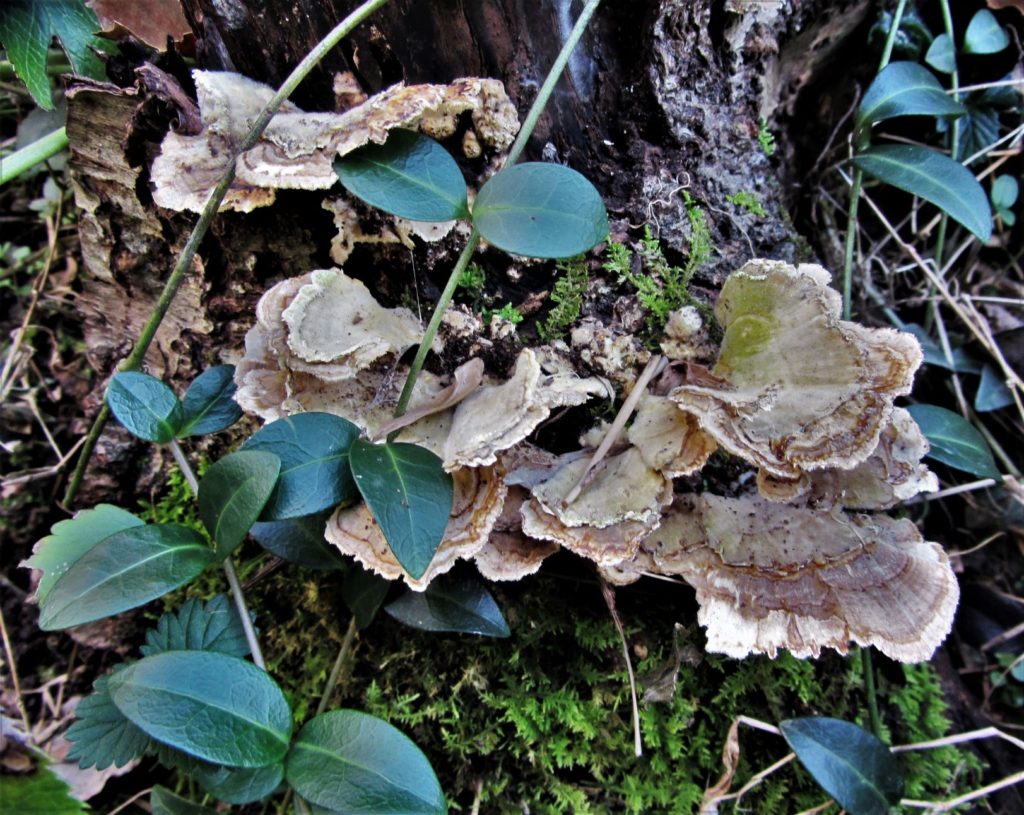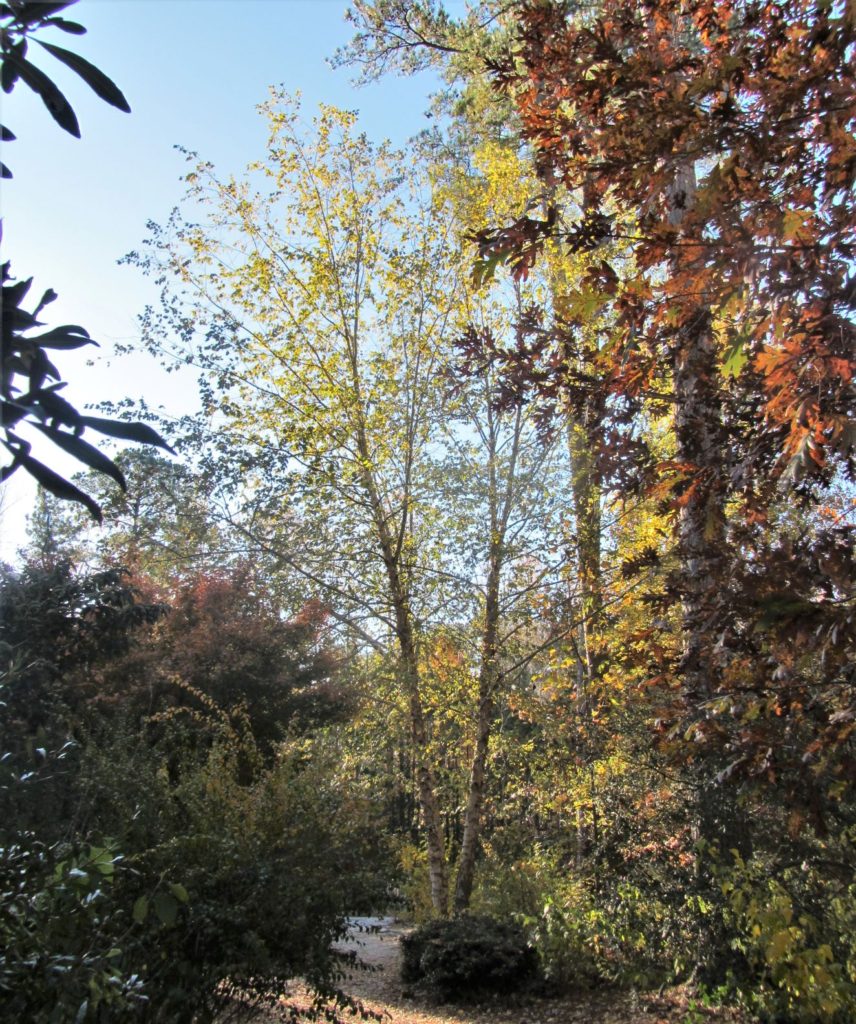Building a ‘Carbon Garden’
You may be ahead of me on this one, but the picture that came to mind when I first saw the term ‘Carbon Garden’ in the January 2021 issue of Horticulture Magazine wasn’t very pretty. In practice, a carbon garden is not only beautiful, but this garden style proves easier to maintain than many others.
A Quick Summary of the Science
Like other elements, carbon is an atom that can manifest as a solid, in a liquid, or as a gas. Carbon dioxide (CO2) and carbon monoxide (CO) remain in the news because they contribute so much to our warming environment. Gasses like carbon dioxide and methane (CH4) trap heat from the sun near the surface of the earth, causing warmer weather and heavier rainfalls. Conversations around reversing the current warming trends usually focus on reducing carbon emissions and finding ways to scrub carbon out of the air.
We have living tools for removing carbon from the air right outside our windows. You see, every green plant cell uses carbon dioxide in its daily efforts to feed itself and sustain the entire plant. In the presence of sunlight, carbon dioxide and water transform into glucose, used to power plant growth, and the waste product oxygen, which we need in every breath.
When you contemplate a leafy tree, imagine each leaf inhaling polluted air and transforming that air into pure food and oxygen.

Evergreen leaves, such as those on Helleborus, filter the air during the winter when deciduous leaves have fallen.
Glucose is further transformed into cellulose, which structures the cell wall of every plant cell. Now, imagine a tree’s roots growing deeper and wider into the earth with each passing year. What are those roots made from? Cellulose; mostly carbon.
A tree, and most any other plant, can stash carbon deep underground where it will remain indefinitely in solid form. As roots interact with fungi, bacteria, decaying plant material and other organisms, humus forms in the soil.
Plant leaves are also made primarily of carbon. When the leaves fall each autumn, they hold stored, solid carbon. If returned to the soil as compost or mulch, the carbon remains stored, or sequestered, in solid form as humus in the soil. Humus traps carbon underground and can keep it in the ground for centuries if the soil is undisturbed. This is how ordinary garden soil transforms into a ‘carbon sink.’
Many plants also store nitrogen, filtered out of the air, on their roots. In fact, any plant in the pea family stores little nodules of solid nitrogen along their roots. Knowing that nitrogen is a major component of fertilizers, you understand how this stored nitrogen increases the fertility of the soil where these plants grow.

Turkey tail mushrooms help decompose the stump of a fallen peach tree. Leaving the stump in place and allowing vegetation to cover it conserves its carbon in the soil.
A log is stored carbon in the form of cellulose. When you burn it in the fireplace, those chemical bonds break down, and much of the carbon rises back into the air in the smoke. When a log is made into a cutting board or other wooden object, then the carbon remains in sold form.
Just as burning can break chemical bonds to release carbon back into the air, so will decomposition. We’ve come to understand that bare dirt, including tilled fields and gardens, releases carbon back into the air. But ground covered by mulch or living plants holds carbon in the soil, preventing it from moving back into the air as a gas.
With the goal to scrub as much carbon as possible out of the air and sequester it in the earth, it helps to understand the science behind the principles of Carbon Gardening. Forests have done this very efficiently for untold ages, as have the great forests of kelp and other sea plants in the world’s oceans.
Only in recent years, with so much natural forest cleared and land exposed, has our planet begun its dramatic warming. Think of all the carbon stored over the centuries as coal, petroleum, peat, and humus rich soil protected under the forest canopy, that has now been released back into our atmosphere over the past century.
The point of Carbon Gardening
We can each use our own property to sequester as much carbon as possible, using gardening methods that hold the carbon in the soil. We can also reconsider garden ‘inputs’ that burn or release stored carbon when planting and maintaining our garden. This includes garden equipment that burns gas, commercial fertilizers, and maybe even those fun trips to the garden center….
Every breath we exhale contains carbon dioxide. Our cells produce it as they produce energy. We live in harmony with the plants we grow, taking in the oxygen they exhale while giving them back our own carbon rich breath. That said, please don’t try to hold your breath as you make your Carbon Garden.
Here are a few key principles of Carbon Gardening that may inspire you. The Audubon Society has a series of articles that go into far more detail.
- Plant intensely in layers: The more plants in growth the more carbon will be scrubbed from the air each day. Trees are most efficient because they support a huge volume of leaves. Include evergreen trees that continue respiration through the winter months. Then plant a shrub layer, perennial layer, and ground covers under the trees to maximize the amount of carbon absorbed by your garden. Evergreen perennials and ground covers continue absorbing and storing carbon through the winter months.
- Feed carbon (and nitrogen) back into your soil with plant materials. Use wood chips, bark, and shredded leaves as mulch to minimize bare ground. Remember that roots sequester a large amount of carbon, nitrogen and other elements. Cut weeds or spent annuals at ground level instead of pulling them up, leaving those roots in the ground to create more humus.
- Instead of tilling soil and exposing stored carbon, sheet compost in the winter to prepare for spring planting. Cover the garden area with cardboard or paper to protect the soil and smother any weeds. Build up layers of compostable materials, or even bagged municipal compost, and allow it to decompose in place. Include coffee grounds, tea bags, rinsed eggshells, fruit peels and vegetable trimmings in the layers of a sheet compost pile. (Don’t add animal products or citrus peels to your sheet compost.) Next spring, planting seeds or transplants will be easy, without any tilling or excessive digging. The new bed will already be fertile with healthy soil.
- Woody plants live for many years and sequester more carbon in their roots and branches each year as they grow. These are the most efficient Carbon Garden plants. A garden made mostly from trees, shrubs, perennials, ferns and ground covers will work most efficiently. Use the I-Tree Tool to educate yourself about the power of trees in your landscape to sequester and store carbon, reduce run-off and scrub other pollutants out of the air. Use this tool when selecting new trees to plant in your own yard.
- If you normally buy flats of annual plants each spring, consider how to plant those borders or containers more sustainably. Consider all of the carbon releasing ‘inputs’ required to produce annual plants, including their plastic containers, the transportation to move them, and the chemical fertilizers and peat-based potting soil used in growing them. While all plants sequester carbon from the air, commercial nursery production of short-lived annuals releases carbon into the atmosphere throughout the process and should be considered by conscientious gardeners. What can you raise from seeds, cuttings, bulbs, or divisions, or obtain through trade with gardening friends?
- Choose native perennials or ones that will naturalize in your climate, so your plants spread and reproduce, reducing the number of plants you need to buy each year to fill your garden. Arid areas even have great success with long-lived succulents, which still scrub the air despite little or no irrigation. Design a sustainable garden that grows well with minimal ‘inputs’ and intervention from the gardener. Native and naturalizing perennials won’t need much watering during dry spells, will prosper without fertilizers, and will expand and self-seed. Consider replacing turf grass with plants that don’t require mowing and regular maintenance.
‘Carbon Gardening’ can make a significant contribution to scrubbing carbon out of the atmosphere and sequestering it in the earth. The total contribution multiplies as the plants grow and your garden develops year to year. A fully grown native tree can remove fifty or more pounds of carbon from the air annually. While the amount varies by tree species and size, every year of growth increases each tree’s effectiveness.
Gardeners who adopt sustainable practices make a sizeable contribution to off-set and mitigate carbon production in their area. Plant more plants and allow them to grow densely to manage rainfall so it is stored onsite, rather than running off so rapidly. The plants sustain wildlife and build a richly integrated ecosystem.
This approach reduces our annual expenses for new plants, fertilizers, and fuel, while also reducing the time required for garden maintenance. It is a good approach for any of us who enjoy watching nature weave her tapestry each year, sustainably, while knowing that our gardens are part of the solution to climate warming and climate change.
All Photos by E. L. McCoy
.








